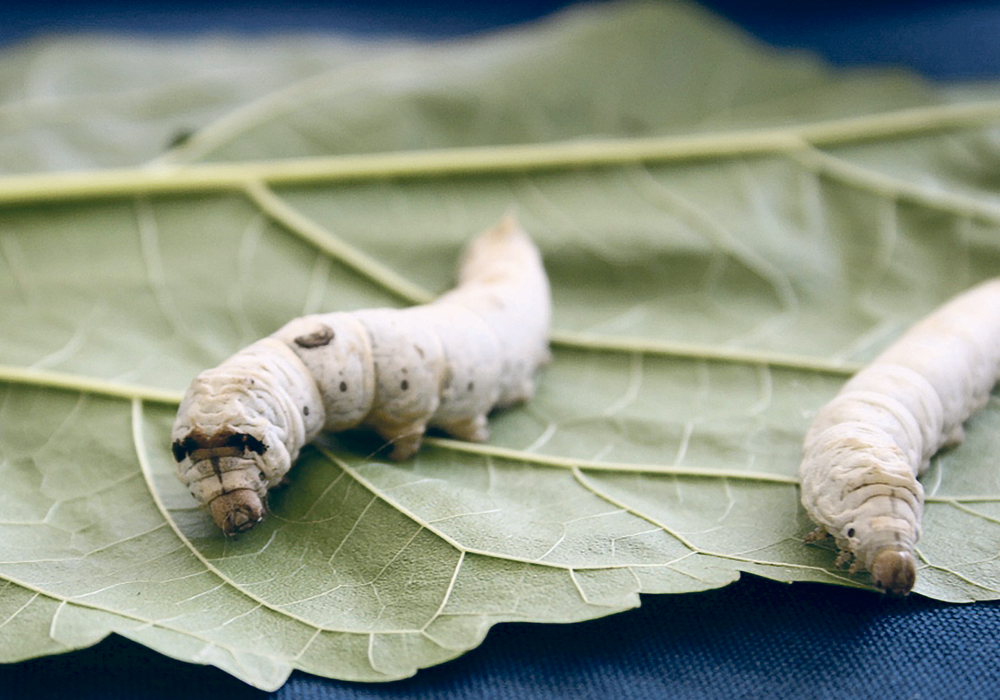The silk is treated with rhizobacteria, which allows seeds to germinate and thrive in otherwise unproductive soil
Silk is one of the most valued natural resources in the world, used in everything from bedding to parachutes, clothing, bike tires and surgical sutures. It also has a unique agricultural application.
A research team at the Massachusetts Institute of Technology has developed a way to coat seeds with silk that has been treated with rhizobacteria, micro-organisms that naturally produce a nitrogen fertilizer. The coated seeds are able to germinate and thrive in otherwise unproductive soils or soils that are too salty to allow plants to properly grow. The process could open up areas of land to productive farming that are currently considered unsuitable for agriculture.
Read Also

Volatile temperatures expected for this winter
DTN is forecasting a lot of temperature variability in the Canadian Prairies this winter. Precipitation should be close to average.
“The silk used was from the domestic silkworm Bombyx mori,” said Benedetto Marelli, professor of civil and environmental engineering.
Marelli had been doing research on using silk coatings as a way to extend the shelf life of seed crops. “When I was doing some research on that, I stumbled on biofertilizers that can be used to increase the amount of nutrients in the soil.”
The fertilizers use microbes living symbiotically with certain plants and they convert nitrogen from the air into a form the plants can take up. The challenge is that the nitrogen-fixing bacteria are hard to preserve outside their soil environment.
“Silk was known to preserve biomolecules (as enzymes and growth factors) as well as viruses,” said Marelli. “However, it had not been used for the type of application we set out to do. It was the first time it was shown that silk could preserve bacteria. In our approach, we used both silk and sugar (trehalose) to stabilize the bacteria. Both the materials are known for their osmoprotectant and biopreservation properties.”
Trehalose, a sugar consisting of two molecules of glucose, is synthesized by some bacteria, fungi, plants and invertebrates as a source of energy and to survive freezing and lack of water. The silk, bacteria, and trehalose were all suspended in water and the seeds soaked in the solution for a few seconds to produce an even coating.
“Silk and trehalose work together to encapsulate the nitrogen-fixing bacteria in a glass-like structure that protects the bacteria during desiccation, (or dehydration),” he said. “Both materials were for our application. Not only do you need the seed coating to preserve your microbe, but you need it to adhere well to your seed, control the degradation and release, and also control mass exchange, which silk and trehalose both provided. We use a 60 milligrams per millilitre solution of silk and trehalose with a weight ratio of 1:3 (silk:trehalose).”
The silk used is water soluble so as soon as the seed is planted the bacteria are released. However, the coating provides enough protection and nutrients for the seed to germinate.
After the coating is applied, the seeds are dried and stored at room temperature. The silk and trehalose coating is very thin and transparent, yet there has been no evidence of cracking during the process of packing, shipping and handling.
Marelli said that they not only tested the seeds at MIT but shipped them to a research facility operated by the Mohammed VI Polytechnic University in Ben Guerir, Morocco, where the coating technique worked very well.

“They have been planted in pots for a month and preliminary studies indicate that the viability of the bacteria is maintained,” he said.
The seeds developed in better health compared to those from untreated seeds and they grew in soils not productive for agriculture. The focus crops have been legumes such as beans and chickpeas but the expectation is to have the technology also work for other crops, which is a focus of ongoing research.
However, he said even if the coating is limited to legume crops, the approach will make a huge difference in regions with limited soil productivity.
A future challenge will be to scale the technology for widespread use and use on commercial farms.
“Scale-up is one of the major challenges of the technology as the regeneration of silk fibres into a water suspension would have to be industrialized for agricultural purposes,” said Marelli.
“At the moment, several silk-based companies are looking at this challenge, both for biomedical and food-coating applications. We also aim at using silk fibres that are non-textile grade or the byproduct of the silk industry, which would allow us to keep down the cost of the raw materials.”
In addition, researchers are working on developing new coatings that could not only protect against salinity but make seeds more resistant to drought by using coatings that absorb water from the soil.
This year, they are expected to begin test plantings in open fields. Plantings to date have been indoors under more controlled conditions.
The research paper was published in the journal PNAS.















